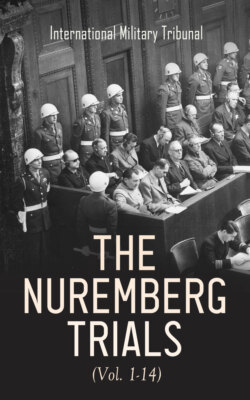Читать книгу The Nuremberg Trials (Vol. 1-14) - International Military Tribunal - Страница 162
Оглавление“We have made a request for an order that a certain percentage of men in the Ack-Ack artillery must be Russians; 50,000 will be taken altogether. Thirty thousand are already employed as gunners. This is an amusing thing, that Russians must work the guns.”
And on 4 October 1943, at Posen, Himmler, speaking of the Russian prisoners, captured in the early days of the war, said:
“As that time we did not value the mass of humanity as we value it today, as raw material, as labor. What, after all, thinking in terms of generations, is not to be regretted, but is now deplorable by reason of the loss of labor, is that the prisoners died in tens and hundreds of thousands of exhaustion and hunger.”
The general policy underlying the mobilization of slave labor was stated by Sauckel on 20 April 1942. He said:
“The aim of this new gigantic labor mobilization is to use all the rich and tremendous sources conquered and secured for us by our fighting Armed Forces under the leadership of Adolf Hitler, for the armament of the Armed Forces, and also for the nutrition of the Homeland. The raw materials, as well as the fertility of the conquered territories and their human labor power, are to be used completely and conscientiously to the profit of Germany and her allies . . . . All prisoners of war from the territories of the West, as well as the East, actually in Germany, must be completely incorporated into the German armament and nutrition industries . . . . Consequently it is an immediate necessity to use the human reserves of the conquered Soviet territory to the fullest extent. Should we not succeed in obtaining the necessary amount of labor on a voluntary basis, we must immediately institute conscription or forced labor. . . . The complete employment of all prisoners of war, as well as the use of a gigantic number of new foreign civilian workers, men and women, has become an indisputable necessity for the solution of the mobilization of the labor program in this war.”
Reference should also be made to the policy which was in existence in Germany by the summer of 1940, under which all aged, insane, and incurable people, “useless eaters,” were transferred to special institutions where they were killed, and their relatives informed that they had died from natural causes. The victims were not confined to German citizens, but included foreign laborers, who were no longer able to work, and were therefore useless to the German war machine. It has been estimated that at least some 275,000 people were killed in this manner in nursing homes, hospitals and asylums, which were under the jurisdiction of the Defendant Frick, in his capacity as Minister of the Interior. How many foreign workers were included in this total it has been quite impossible to determine.
